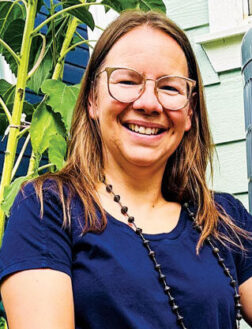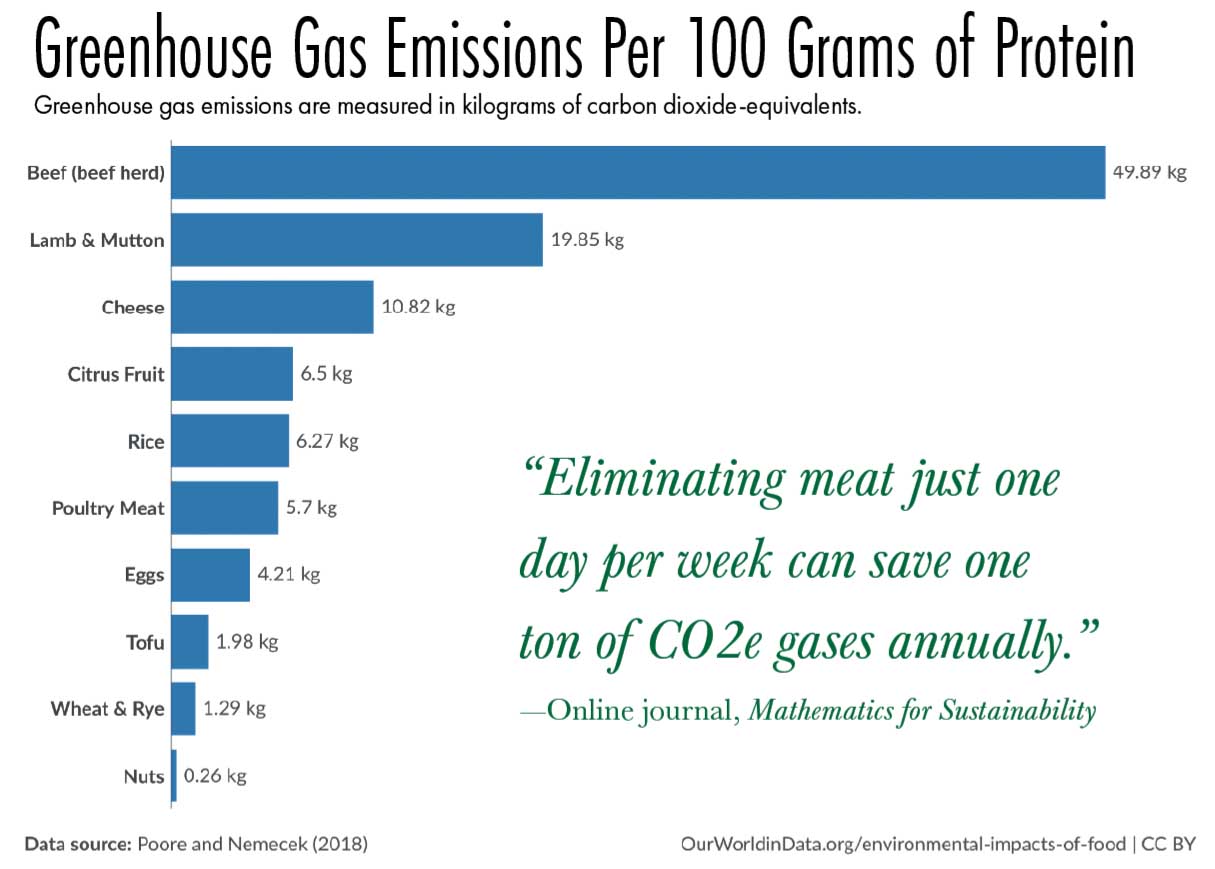 Twenty-five years ago, while in a master’s program at the University of Nebraska, I stood in a buffet line next to a professor and his partner (also an academic). I was sorting through the offerings—a typical lunch, with salad, meatballs, pasta—and my professor’s wife asked our group of grad students: “Do you know how much water it takes to raise a cow?” It was a simple question, and though I could claim hog and sheep farming as part of my childhood, I didn’t know the answer. “A lot,” she replied to us after some silence, and proceeded to converse about why in other parts of the world (like her home country in West Africa), people don’t consume a lot of beef, if any.
Twenty-five years ago, while in a master’s program at the University of Nebraska, I stood in a buffet line next to a professor and his partner (also an academic). I was sorting through the offerings—a typical lunch, with salad, meatballs, pasta—and my professor’s wife asked our group of grad students: “Do you know how much water it takes to raise a cow?” It was a simple question, and though I could claim hog and sheep farming as part of my childhood, I didn’t know the answer. “A lot,” she replied to us after some silence, and proceeded to converse about why in other parts of the world (like her home country in West Africa), people don’t consume a lot of beef, if any.
This innocuous comment over lunch sparked a question—how much is a lot? I learned that raising cows is tremendously resource intensive, to the tune of 1,500 gallons of water per one pound of beef. Combined with my growing concerns around big agriculture (which grew with each trip to visit family in the Midwest), it just didn’t add up for me anymore. I stopped eating beef.
I share this story, in part, to underscore why I like to talk about “greener” choices—not to shame anyone, but to spark curiosity and reflection. This story also introduces a change within our sphere of influence that, if scaled, could have a very big impact: eating less meat and dairy.
You may have heard of Meatless Mondays, an effort popularized by advertising executive Sid Lerner in the early 2000s. Meatless Monday has origins during World War I and II, when the U.S. encouraged people to avoid eating lamb, pork, and beef to conserve meat for European allies. Lerner’s advocacy for Meatless Mondays grew from his interest in supporting public health, following his own cholesterol-related health scare.
Given that the average American’s diet in 2003 consisted of 15 percent more red meat than was even necessary per the guidelines, Lerner reasoned, why not just take meat off the plate for a dinner or for a day? By 2015, environmental advocates promoted Meatless Mondays to raise awareness about resource intensity and pollution within food production.

Scientist Hannah Ritchie (University of Edinburgh) produced a report for Our World in Data. In it, she traces the environmental impact of 29 common foods, including beef, cheese, citrus fruits, and nuts. Her report makes visible the hidden ways that food production impacts the environment, including land use, farming, animal feed production, processing raw products into purchasable foods, transportation, and packaging. Beef produces far and away more greenhouse gas emissions per kilogram than anything on Ritchie’s list, at 50 (compared to the second most intensive food, lamb, at 20; or even the least intensive meat, poultry, at 6).
Today, stories from the Amazon rainforest and the U.S. heartland show us where all this resource intensity is leading. The Guardian reports that 800 million trees have been cut down in the last six years to clear pasture for cattle in the Amazon. And 35 percent of corn produced in this country is used to feed cows, draining valuable water resources, since corn is itself a pretty resource intensive crop. Obviously, there are better ways to raise cattle, and many, including my dad and his wife, practice them. But overall, from a sheer resource intensity standpoint, vegan diets produce 75 percent less greenhouse gas emissions and a 54 percent reduction in water use than diets with even a small amount (1.5 pounds) of meat per week, according to Oxford University.
Still, can one action—like trading that juicy hamburger for a black bean burger—have an effect on the climate crisis? According to the online journal Mathematics for Sustainability, published by Penn State University, calculations show that eliminating meat just one day per week can save one ton of CO2e gases annually, equivalent to the greenhouse gas generated by driving about 2000 miles. And, as with the first Green Simple Living column about heat pumps (Sept. 2024 issue), there can be many secondary benefits, such as spending less money and enjoying health benefits from plant-based diets.
Though I have not yet adopted a full vegan diet, I can say that I don’t miss those special occasion beef tenderloins or filet mignons. And I’ve had so much fun discovering tofu preparations with my family. This Thanksgiving, we will downsize from a full turkey to a drumstick. We all know that it’s the sweet potatoes and cranberries that make the holidays special.
Cristina Foust is a professor of Communication Studies at MSU Denver, and co-founder of the Westerly Creek Elementary School Green Team. Email her at cfoust2@msudenver.edu or reach out on Facebook. Her column Green Simple Living appears periodically in Front Porch.




0 Comments